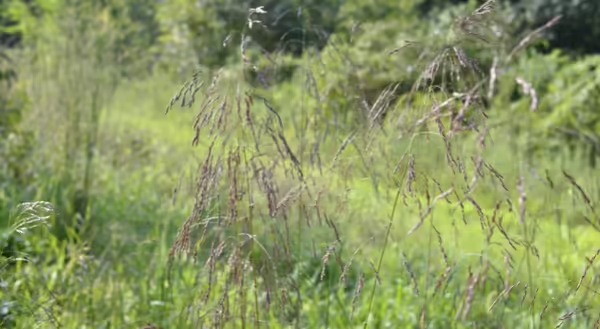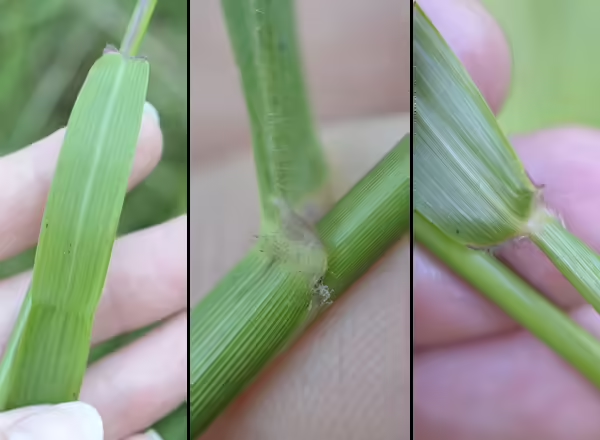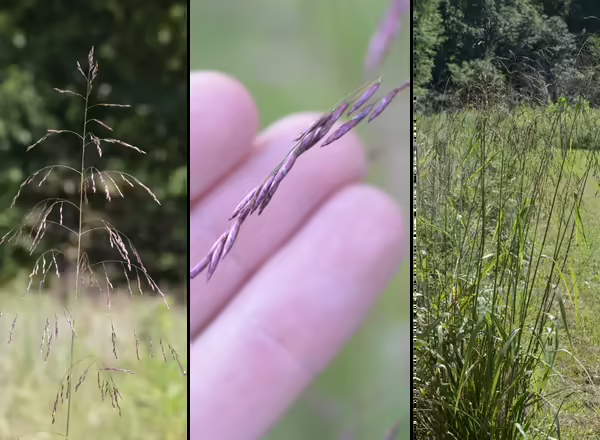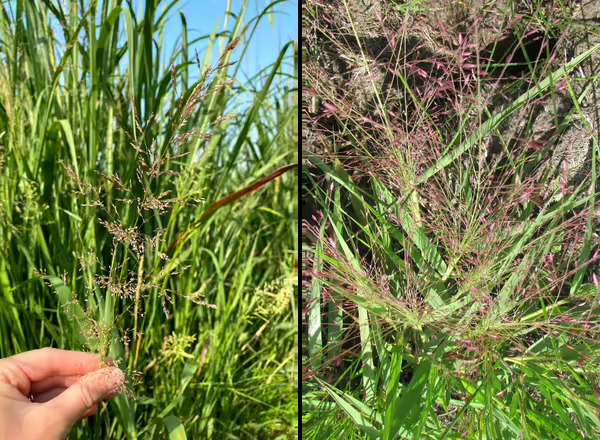
While driving to work today, I scanned the sides of the road to see what grasses are in bloom. I was happy to see large patches of a grass with purple inflorescences. These dark purple grass spikelets belong to Purpletop (Tridens flavus). Ah, a common name that accurately describes the grass! I love when that happens. While you may not have heard of Purpletop, you may recognize this plant by one of its other common names – Grease Grass. Why is it called that? And how can you identify it?
Range and habitat
Found in all but the northernmost counties of Illinois, Purpletop is a relatively common grass. It is a native species but you’ll often find it in disturbed areas, like fields and roadsides. It can be found in savannas and woodland borders as well. It can be used as livestock forage or cover for wildlife.

Vegetative characteristics
Purpletop usually grows 3-5 feet tall. As a warm-season grass, it will put on much of its height and flower in the heat of summer. Its stems are smooth and leaves are broad. You can find hairs on the outside of the leaf sheath in the collar region, right where the leaf blade becomes the sheath.

Purpletop’s purple top
This grass becomes infinitely simpler to identify if you find it in flower. The inflorescence is a panicle, with open airy branches that droop at their tips. The spikelets are purple in color and held on branches.
My favorite way to teach others to identify this grass is to have them run their hand from the stem up through the inflorescence. Why? This grass produces an oil that rubs off when touched. While everyone wipes their hands on their clothes to get the oil off of them, I get lots of comments that they’ll never fall for that again, but they’ll remember that grass by its other common name, Grease Grass!

Look-alikes
There are some other grasses that you might confuse with Purpletop. First is Redtop, which looks similar, but is smaller in size, has red spikelets, and blooms earlier than Purpletop. Next is Purple Lovegrass. This grass is also smaller in size, no taller than 2 feet. It has a much more densely branched panicle with purple spikelets but it doesn’t have the open, airy drooping branches. Additionally, neither of these grasses produces the oil that Purpletop does.
Never miss a new post! Sign up for our email list.
ABOUT THE AUTHOR: Erin Garrett is a Natural Resources, Environment, and Energy Educator for University of Illinois Extension serving Alexander, Johnson, Massac, Pulaski, and Union counties. Erin develops and delivers high impact programming to adults and youth to help them develop an appreciation for natural resources and to empower them to make small changes to positively impact the environment. Erin’s programming focuses on why homeowners should consider choosing native plants, how to support native pollinators, how to identify grasses, how to identify and manage invasive species, and developing an appreciation for prairie ecosystems.
ABOUT THE BLOG: Grasses at a Glance dives into grass identification, focusing on tips and tricks that make grass identification possible. Get information about native and non-native species, how to tell look-alikes apart, and which grasses you can find in Illinois.
Purpletop, Tridens flavus, is a native, warm season grass that can be found in savannahs, fields, and roadsides, and grows three to five feet tall. Its stems, rachis, and spikelets are covered in a thin layer of an oily substance, leading to its other common name of Grease Grass. At the...